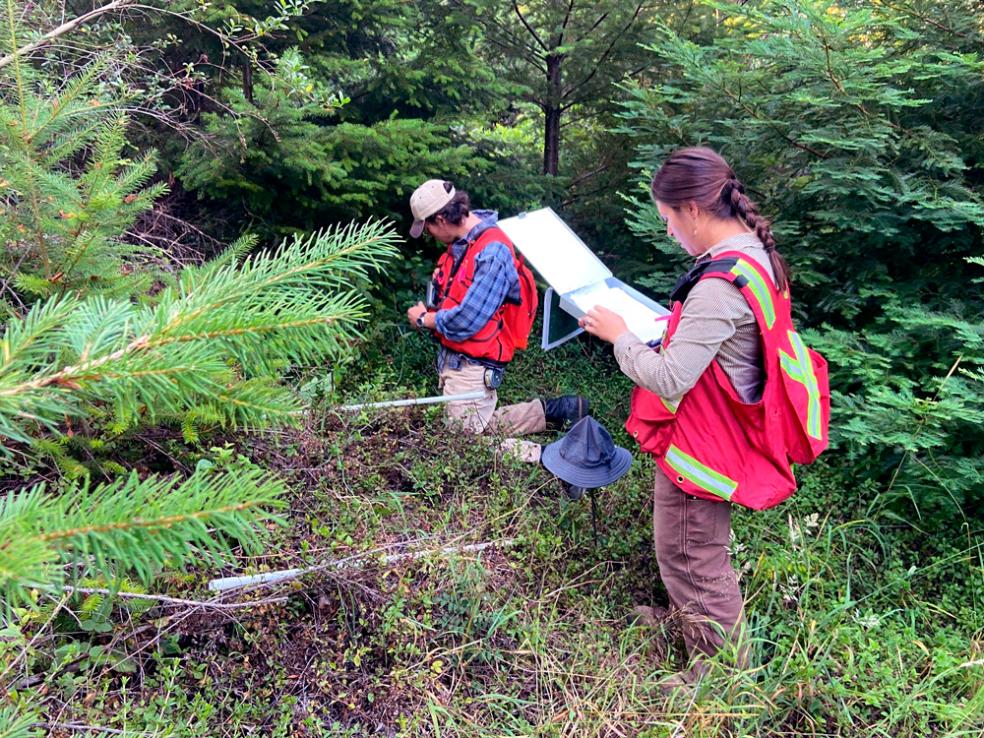
A team of Cal Poly Humboldt staff, faculty, and students is looking at one way of helping the planet breathe better and, perhaps, reduce global warming.
Forests provide a range of environmental, social, and economic benefits, from clean water to wildlife habitat, cultural resources, and recreation. But sustainably managed forests can also remove tremendous amounts of carbon dioxide from the atmosphere and store it as carbon in trees and shrubs and in the soil.
The approximately 900-acre Jacoby Creek Forest, acquired by the University in 2019, could therefore play a significant role in helping Humboldt mitigate its greenhouse gas emissions and meet the goals in its Climate Action Plan 2.0.
With support from the California State University’s Campus As A Living Lab grant, the Office of Sustainability and the Forestry department have launched a new project to better understand the potential of this carbon sink. The project aims to do several things: 1) Train and pay undergraduate students to conduct data collection and analysis; 2) Determine how much carbon is stored in the forest; 3) Estimate the annual carbon sequestration rate; and 4) Calculate the potential greenhouse gas emissions offset by campus operations.
The project team includes Forestry instructor and forest manager Kevin Boston, Forestry Professor Pascal Berrill, instructor Sara Hanna from the Department of Forestry & Wildland Resources, and Climate Action Analyst Morgan King.
Students are involved as well. This summer, Forestry majors Destiny Rivera and Jacob Adelman were hired to conduct field work. Braving mosquitoes, ticks, and poison oak, Rivera and Adelman are gaining field experience relevant to careers in sustainable forestry and forest carbon project verification.
Rivera and Adelman hiked into the forest to establish sample plots. Using the standardized inventory methodology from the Climate Action Reserve, they measured diameter, height, crown ratio and additional characteristics of the Douglas fir, western hemlock, coast redwood, and other tree types within the plots.
Each tree also received a tag that will be used to identify trees. In five years, another student crew will return to re-measure the trees. The difference between the year-one and year-five measurements will help determine the rate of forest carbon sequestration. The scientists expect to establish and measure over 400 plots.
The team has identified an initial estimate of 27 tons of carbon per acre of above-ground biomass from the sample plots, which are predominantly younger stands. Once the entire forest is surveyed, the team will be able to provide an improved estimate and determine the dollar value of sequestered carbon.
The next step for the project team is to secure additional funding.
“The Campus as a Living Lab grant is providing the funding needed for the first round of data collection,” says King, “but we’ll need additional funding for student crews to complete the re-measurements.”
He is optimistic.
“This is a project that builds student capacity, while helping the university achieve its climate goals,” he says. “It could be a very attractive prospect for funders.”